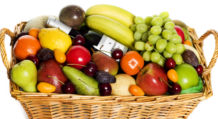By Trisha Gedon Oklahoma State University
An associate professor at Oklahoma State University has another use for them – eating kitchen scraps and junk mail.
Doug Hamilton, OSU Cooperative Extension waste management specialist, has been working with worms and vermicomposting for more than a dozen years.
“Vermicomposting is similar to traditional composting in that both use natural processes to stabilize organic matter,” Hamilton said. “Traditional composting relies on fungi and microorganisms to stabilize organic matter. With vermicomposting, the worms do most of the work. One advantage to this is you don’t have to aerate a vermicomposting pile. The worms do all of the turning for you.”
The typical composting worm is called Eisenia fetida, otherwise known as red wigglers. They reproduce quickly and adapt well to life in a compost bin. They also have a big appetite and can consume a good amount of food daily. These worms are available at some bait stores, as well as worm farms.
Through Hamilton’s work with worms, he discovered horse manure and poultry litter were favorite sources of food for the worms. However, kitchen scraps, such as juicy vegetable matter, along with garden waste, will work just fine, too. They also like coffee grounds and filters, as well as tea leaves and tea bags. As an added bonus, the worms also like shredded paper.
“Vermicomposting is a great way to get rid of your junk mail. Just shred it and put it in the bin at feeding time,” he said. “Vermicomposting also is good for the environment because the worms eat a lot of what you would typically just toss in the trash. By eliminating some of your household waste, you are cutting down on the amount of material going into landfills. And for the gardening enthusiasts, the composted material is like black gold for your garden.”
Composting worms prefer higher amounts of carbon than is normal for traditional composting. Coffee grounds, kitchen waste and manure contain a lot of nitrogen, so these materials need to be diluted with byproducts containing high amounts of carbon. This is where you add in the shredded junk mail and fallen leaves.
There are a number of composting bins available online. One Hamilton uses at OSU is a set of four round bins that are stacked on top of each other and contains a total of about two square feet. He recommends about a pound of worms for each square foot of space available in the bins. Because the worms will multiply, start with about a pound of worms in this amount of space. Also, begin by feeding around a pound of food per day of food scraps and shredded paper or leaves. Increase the feeding rate as you see food starting to disappear.
“If you keep your bin indoors, be careful not to overfeed the worms as this will breed flies,” he said.
The bottom tray of the composting bin is called a tea catcher and has a spigot for easily removing the tea. The liquid is a byproduct of the composting worms and makes a wonderful fertilizer.
“The compost tea is about 10 times more potent than what you can purchase in the store,” Hamilton said. “Diluted compost tea is great, especially for tomatoes.”
Once the worms get busy chomping on the vegetable matter, it will take several months for them to turn it into compost. Expect to get about 10 pounds of compost per tray. Starting a vermicomposting bin now would give gardeners a good amount of compost with which to start their gardens in the spring. Once a compost bin is full, just dump it into a pile and keep it covered until spring. When planting time comes around, mix the compost with some potting soil, incorporate it right into flower beds or use as a topdressing for house plants.
Gardeners also can make their own composting bin out of a variety of materials such as wood, plastic, Styrofoam, metal containers, crates or boxes. Because the worms prefer to live in the dark, whatever container you choose will need to have a secure, removable lid to help keep out flies, rodents and other animals. Ventilation holes in the bin and lid need to be small. However, half-inch holes in the bottom of the container will help excess moisture, or tea, drain. Be sure to place a tray under the bin to catch the tea.
The placement of the compost bin will have a direct impact on your success. Red wigglers do best in temperatures ranging from 65 degrees Fahrenheit to 85 degrees Fahrenheit. They can tolerate temperatures above 85 degrees for a short time, but will die if exposed to high temperatures for an extended period of time.
Under the kitchen sink, in the basement or the laundry room are good choices. During temperate weather, outside in the shade works well.
“The worms are more tolerant of temperatures below 65 degrees. They’ll survive unless their core temperature drops below freezing,” Hamilton said. “Cocoons, or worm eggs, can survive for extended periods of cold and will hatch once the weather warms up.”
Worm survival also depends on moisture. The optimum moisture content for growth is 70 percent to 85 percent. Keeping the moisture at this level will help ensure the production of tea.
“Vermicomposting is a lot of fun and can be an educational experience, especially for children,” he said. “It’s great for gardening and also is environmentally friendly.”
photo credit – Brian Gratwicke **




